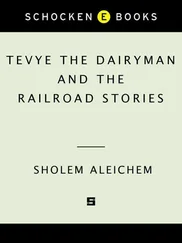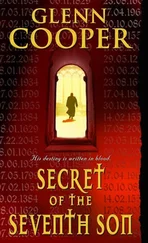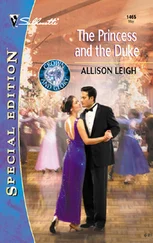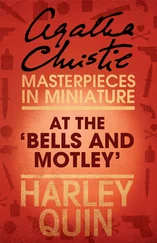Sholem Aleichem - Tevye the Dairyman and Motl the Cantor's Son
Здесь есть возможность читать онлайн «Sholem Aleichem - Tevye the Dairyman and Motl the Cantor's Son» весь текст электронной книги совершенно бесплатно (целиком полную версию без сокращений). В некоторых случаях можно слушать аудио, скачать через торрент в формате fb2 и присутствует краткое содержание. Год выпуска: 2009, ISBN: 2009, Издательство: Penguin, Жанр: Классическая проза, на английском языке. Описание произведения, (предисловие) а так же отзывы посетителей доступны на портале библиотеки ЛибКат.
- Название:Tevye the Dairyman and Motl the Cantor's Son
- Автор:
- Издательство:Penguin
- Жанр:
- Год:2009
- ISBN:978-1-101-02214-6
- Рейтинг книги:4 / 5. Голосов: 1
-
Избранное:Добавить в избранное
- Отзывы:
-
Ваша оценка:
- 80
- 1
- 2
- 3
- 4
- 5
Tevye the Dairyman and Motl the Cantor's Son: краткое содержание, описание и аннотация
Предлагаем к чтению аннотацию, описание, краткое содержание или предисловие (зависит от того, что написал сам автор книги «Tevye the Dairyman and Motl the Cantor's Son»). Если вы не нашли необходимую информацию о книге — напишите в комментариях, мы постараемся отыскать её.
Motl the Canto’s Son
Fiddler on the Roof
Tevye the Dairyman and Motl the Cantor's Son — читать онлайн бесплатно полную книгу (весь текст) целиком
Ниже представлен текст книги, разбитый по страницам. Система сохранения места последней прочитанной страницы, позволяет с удобством читать онлайн бесплатно книгу «Tevye the Dairyman and Motl the Cantor's Son», без необходимости каждый раз заново искать на чём Вы остановились. Поставьте закладку, и сможете в любой момент перейти на страницу, на которой закончили чтение.
Интервал:
Закладка:
The narration of the Motl tales seems to follow the rules set in Sholem Aleichem’s earlier stories narrated by children. In most if not all of those tales of childish crime and punishment, the narrators are the children-culprits themselves. Since the mind of a child, not to mention a child’s linguistic abilities, cannot articulate all the insights that the stories are supposed to convey, the child narrator — in Motl as well as other stories narrated by children — is actually a kind of hybrid, in which the voices of a child and an adult complement each other. The attentive reader of Motl will detect this on the first page of the first episode, in the description of the child and his “friend,” the calf Meni, expressing their “dankbarkeyt tsu der natur” (gratitude to nature) through a wild dance and a “singing,” which is “a song without words, without notes, with no motifs, a kind of a nature-song of a waterfall, of racing waves.” Obviously, while the child and the calf are dancing and shrieking and bellowing, it is an adult narrator, well versed in the conventions of romantic hyperbole, who does much of the telling.
This artificial arrangement extends to the incredible subtitle of the Motl cycle: “ksovim fun a yingl a yosem,” writings of an orphan boy. How could a mere nine-year-old boy with no education produce ksovim, literary works? The implausibility of the subtitle has the effect of drawing attention to the author’s role, and of undermining the status of Motl as a realistic, three-dimensional fictional character. (None of Sholem Aleichem’s child protagonists would ever attain the realistic solidity and subtlety of Tevye.) The author aimed to create a child narrator who could nevertheless convey adult truth.
Motl is trusted with an extraordinary artistic mission: to say a truth about the crisis of eastern European Jewry in the first decade of the twentieth century that nobody else would dare to say, a truth that could be reported only by someone as innocent and guileless as a child — as in Hans Christian Andersen’s satirical parable of the child who pronounces the king naked. Motl is put forward to say, in his childish way, that the demise of the traditional eastern European Jewish civilization is not only unavoidable but also welcome; that it is high time for the shtetl culture to leave the historical stage for something else, no matter how primitive and crass, as long as it is alive and healthy; that being an orphan is, under certain circumstances, preferable to being burdened with a moribund ancestry.
As a fictional character, Motl is what Deleuze and Guattari, in their discourse on minor literature, refer to as agencement, an arrangement of traits and narrative inflections that convey an attitude rather than the reality of a specific fictionalized human being. The function that he is to fulfill demands a Peter Pan-like narrator, and therefore, while the locations and social environments that Motl observes and describes are in constant flux, he himself remains static, a fixture, his character immune to the process of aging and to being reconditioned by drastically changing life situations. This sameness subtly influences the presentation of the story’s plot, to the extent that it is determined by chronology. In fact, all the indications of time progression and linear sequential chronology in the story are blurry and indeterminate. As much as Motl’s age at the beginning is unclear (the author wavered on whether he should be presented as a five-year-old or a nine-year-old), his age at the end, left unfinished because of the author’s death, is even more ambiguous. How many months or years elapse between Motl’s family’s departure from Kasrilevke and their arrival in America? Six months? A year and a half? A few years? And how many months or years separate their arrival in America from their rise into the lower middle class as the owners of a newspaper and candy kiosk in New York? Nowhere in the story do we find firm chronological ground on which to base our calculations. The Jewish holidays, which in many Hebrew and Yiddish stories provide the key to chronology, are of little help here. Their significance is merely symbolic: Pentecost (as the story begins) stands in for the springtime recurrence of growth and instinctual vitality (and not for the reception of the Torah by Moses on Mount Sinai), and Yom Kippur (at the start of part 2) represents the crisis of the passage from the Old World to the New. Nature and its seasons play an even smaller role in the articulation of the story’s time sequence. Mysteriously, there is no winter at all in Motl, as if cold weather, snow, and winter storms were unknown in Ukraine, western Europe, and North America. Just one autumnal sea storm is allowed, breaking up what seems an eternal summer. As much as the story necessitates a fixed, unchanging, and unchangeable observer-narrator, it also seems to require a continually bright, warm season. The heat complements Motl, allowing him to be himself — nimble, energetic, and bright, unencumbered by heavy clothes, never seeking the warmth of hearth and home, always Puck-like, ready to walk, to run, almost to fly.
Motl’s personality consists of both “hot” and “cold” components. On the one hand, he flows with everything that is vibrant: appetites, vitality, effervescence, motility, optimism, lust for life, and freedom. On the other hand, he is a keen, unemotional, unflinching observer. The “hot” component informs the escapades he reports, his total rejection of the stasis of the shtetl, and his fervent identification with traveling — and the staccato rhythms of his short sentences. The “cold” component inheres in the devastating caricatures he draws of almost all the characters in the story, including those nearest and dearest to him, such as his widowed mother. The very emotional scene of his mother, about to start on the voyage to America, taking leave of her good neighbor Pessi displays how coldly observant he is: “Suddenly everyone is kissing, and crying and howling, worse than Tisha B’Av,” the official day of mourning for the destruction of the two Jerusalemite temples. His red-eyed mother falls, as if in a swoon, into the big arms of the overweight Pessi, “whose double chin swings, and big tears as big as peas roll over her cheeks.” Far from being attuned to the emotional states of the characters he portrays, Motl focuses on whatever is discordant and inviting ridicule, such as Pessi’s shiny, fat cheeks. This is consistent with his passion for drawing cartoons that emphasize all kinds of unseemly metonymies: his mother’s red eyes (highlighting her role as the Niobe of the story or mother Rachel bewailing the fate of her exiled children — everybody grows tired of her lachrymosity); his brother Elye’s fledgling beard, which sprouts not from his chin but from his throat (exploding his brother’s posture of virility and manly self-importance); Elye’s wife Bruche’s large, coarse, unfeminine legs and feet (indicating who in his brother’s family wears the trousers).
Sholem Aleichem intended for Motl to be artistic in some way. As the scion of a cantorial family, Motl was originally meant to be musical, but even as the first episodes were being serialized, Sholem Aleichem reconceived him as a cartoonist. His Motl, he realized, should not be contaminated by any vestige of the traditional shtetl culture; nor should he in any way be seen as an extension of his father, whose death at the beginning of the story is supposed to symbolize the final expiration of his world. Drawing, being essentially a non-Jewish art (did not the Lord prescribe through Moses: “Thou shalt not make unto thee any graven image, or any likeness of anything that is in heaven above, or that is in the earth beneath, or that is in the water under the earth” [Exodus 20:4]?), dovetails with the innovative, nontraditional aspects of Motl’s personality. Above all else, being a cartoonist rather than a musician goes hand in hand with his detached manner of observing and describing.
Читать дальшеИнтервал:
Закладка:
Похожие книги на «Tevye the Dairyman and Motl the Cantor's Son»
Представляем Вашему вниманию похожие книги на «Tevye the Dairyman and Motl the Cantor's Son» списком для выбора. Мы отобрали схожую по названию и смыслу литературу в надежде предоставить читателям больше вариантов отыскать новые, интересные, ещё непрочитанные произведения.
Обсуждение, отзывы о книге «Tevye the Dairyman and Motl the Cantor's Son» и просто собственные мнения читателей. Оставьте ваши комментарии, напишите, что Вы думаете о произведении, его смысле или главных героях. Укажите что конкретно понравилось, а что нет, и почему Вы так считаете.












